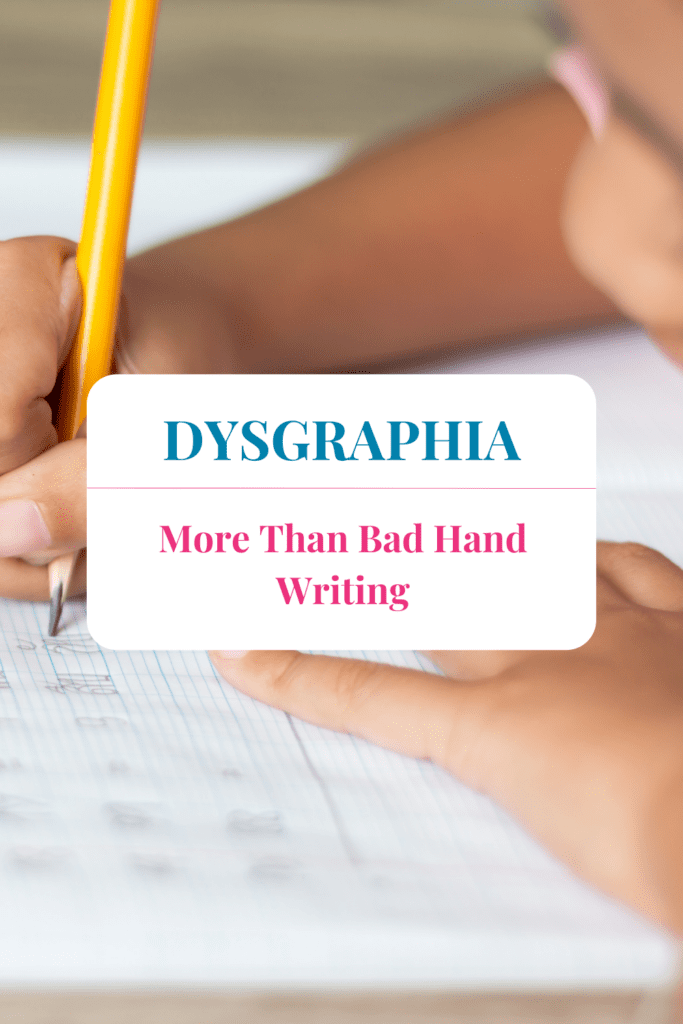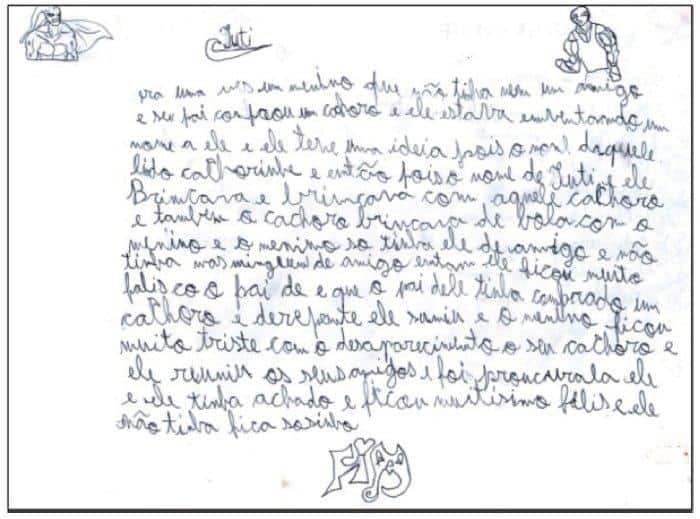Dysgraphia is more than just bad hand writing.
In my last article Smart Kids Who Hate to Write I described the main areas of breakdown with dysgraphia and what it looks like.
Many people, including professionals think that the main issue with dysgraphia is poor fine motor control.
Language-Based Dysgraphia
Dysgraphia is more layered than poor fine motor development. It can also involve what is known as ‘language-based dysgraphia’. Similar to dyslexia, these kids may have difficulty converting sounds into writing or knowing how to spell the word.
Spelling might be phonetic but the spelling is incorrect or they have difficulty spelling irregular words. Poor recall of how to write letters is frequent; the letters may be reversed, upside down, they may skip letters or entire words or the words or letters are not in the correct order.
Frequently this type of dysgraphia is accompanied with dyslexia.
The Underlying Cause
Often times the underlying factors with dysgraphia are weaknesses with sensory-motor processing as well as front to back processing in the brain.
While this can impair fine motor skills like hand-writing, this does not mean it affects intelligence. I’ve worked with several dysgraphic children who have a genius in mathematics.
Other kids are very adept at speaking, memorizing and understanding complex concepts. If you ask them to tell you what they know orally – they have no problem. However, writing what they learned is another story.
It’s no wonder these kids are frequently seen as lazy or just plain sloppy.
When to Look Further
It is important to know that there are other factors that can affect penmanship that go beyond brain development and organization.
The sensory-motor system and thus penmanship can be impacted by certain conditions known as PANS and PANDAS.
Signs that your child’s penmanship could be due to this condition is if:
- Your child’s penmanship was at one time legible and suddenly or even progressively becomes worse
- If dysgraphia waxes and wanes (it could be illegible for weeks and then suddenly improve.) This waxing and waning often coincides with a worsening in behaviour such as OCD, ODD, sensory processing issues, hyperactivity and anxiety.
Waxing and waning occurs because there is inflammation in the basal ganglia caused by an auto-immune condition. The waxing and waning occurs as your child’s immune system goes in and out of high-alert when the infection goes into an active or inactive state.
My own daughter had terrible penmanship for years until we learned that many of her other symptoms were all connected to PANS.
The Current Way of Addressing Dysgraphia
The main way that dysgraphia is addressed by the education system is to accommodate the child with assistive technology.
This usually means that the child will have his or her own computer or iPad to write the answers or to complete an assignment. In other instances, they are asked to provide oral answers for assignments and tests.
The Limitations of Assistive Technology
The fallacy in the approach that uses assistive technology as a first resort is that it fails to address the root cause. This approach assumes that there is little that can be done to improve this condition. This is unfortunate because in many instances when a child receives the correct intervention, dysgraphia can be overcome.
Therapies that both improve sensory-motor function, right and left brain integration as well as front to back processing can help make significant gains in dysgraphia.
In the instance of my daughter, addressing stealth infections and the immune system related to PANS, completely eliminated illegible handwriting.
Looking at Where the Problem Originates – Gross Motor Development
When dysgraphia is not related to PANS, and is instead triggered by brain organization then the first place to start is with improving the sensory-motor system.
Many people think that this means practicing fine-motor skills. Instead of looking at where the problem is happening, we need to look at where the problem is originating.
In the case of dysgraphia, the problem does not originate in fine motor development, but rather gross motor development.
Gross motor development precedes fine motor development when an infant is developing which is why a whole-body approach is necessary for improving or even correcting this disorder. Hours of handwriting practice will only continue to re-enforce the wrong connections.
Addressing retained primitive reflexes can help a child make huge gains in their hand writing as well as their processing.
Whole-Body Exercises for Better Hand Writing
Exercises that re-organize the brain and then re-train, strengthen and develop the gross muscles in the body is the first place to begin for an intervention to be effective.
Once the gross motor skills are developed, then the fine motor skills used for writing can be properly trained.
Some of my recommended exercises to start are:
- Cross-crawls
- Superman
- Tracing Lazy 8’s – 10 minutes a day
Moving Beyond Assistive Technology and IEP’s
The key in addressing the underlying cause of dysgraphia is to develop the lower brain levels, to do exercises that increases communication between the left and right brain hemispheres as well as front to back processing.
My programs offer one-on-one learning therapies that targets the underlying reason why learning, writing and reading is so hard for your child. Think of me as a personal trainer for your child’s brain.
Set up a free 20-minute discovery session to learn more about how you can help your child improve their visual processing so they can become a fluent reader and a more confident kid.


